Insulating your attic is vital to reducing heating and cooling costs, and helps prevent moisture and drafts from entering your home. However, you may wonder how deep to place your insulation for optimal effectiveness. We researched common types of insulation for attics and what can happen if you have too little or too much insulation.
Prepare to add a layer of insulation that is anywhere from 10 to 14 inches to your attic. Depending on the type of insulation you use and the depth of layering, you can increase the R-value to a desirable level.
The suggested R-value for most attics ranges between 30 to 38. The R-value is based on how much thermal insulation is needed based on your geographical location and home's needs.
Read on to learn more about the benefits of insulation, achieving the proper depth, and ideal R-value for your attic space and home.
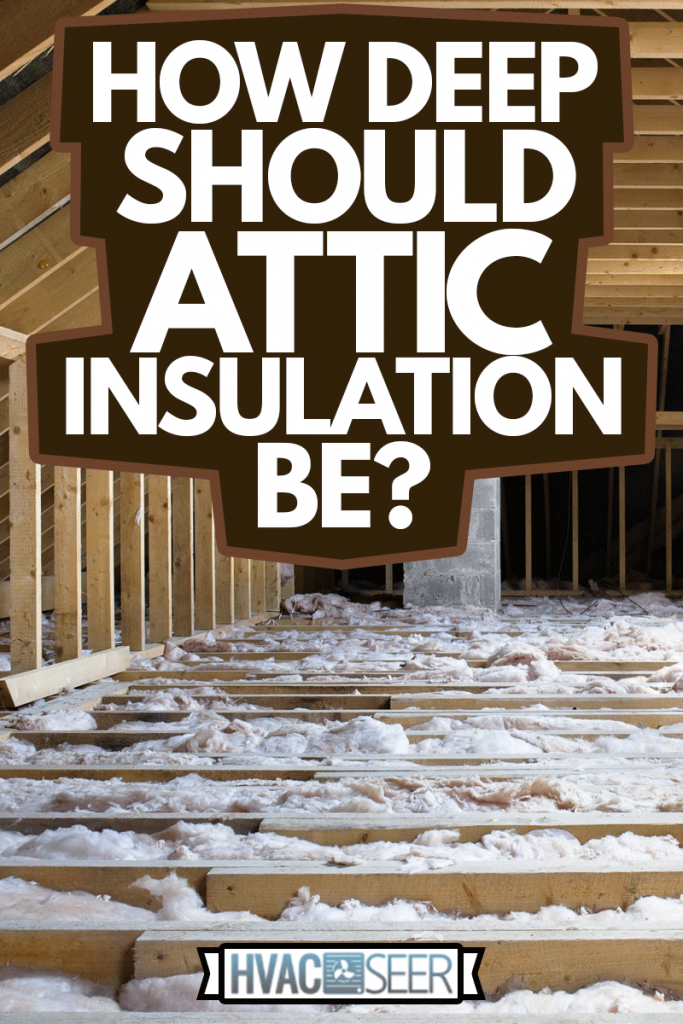
Understanding Insulation For Your Attic
If you have an attic, whether it is finished or unfinished, it is best to use some form of insulation to protect against outside elements and energy loss.
Too often, the attic allows outside drafts can come in, as well as unwanted moisture build-up or pests. A poorly insulated attic may lead to increased heating or cooling costs, fluctuating temperatures indoors, and even damage.
For most homes, it is best to put down enough insulation in the attic, so it is 10 to 14 inches deep. Depending on your home's structure, weather conditions, and the type of insulation you use, you want an R-value between 30 and 60.
Insulation may be in the form of foam, loose fluffy material, a roll or batting, or even a board-style.
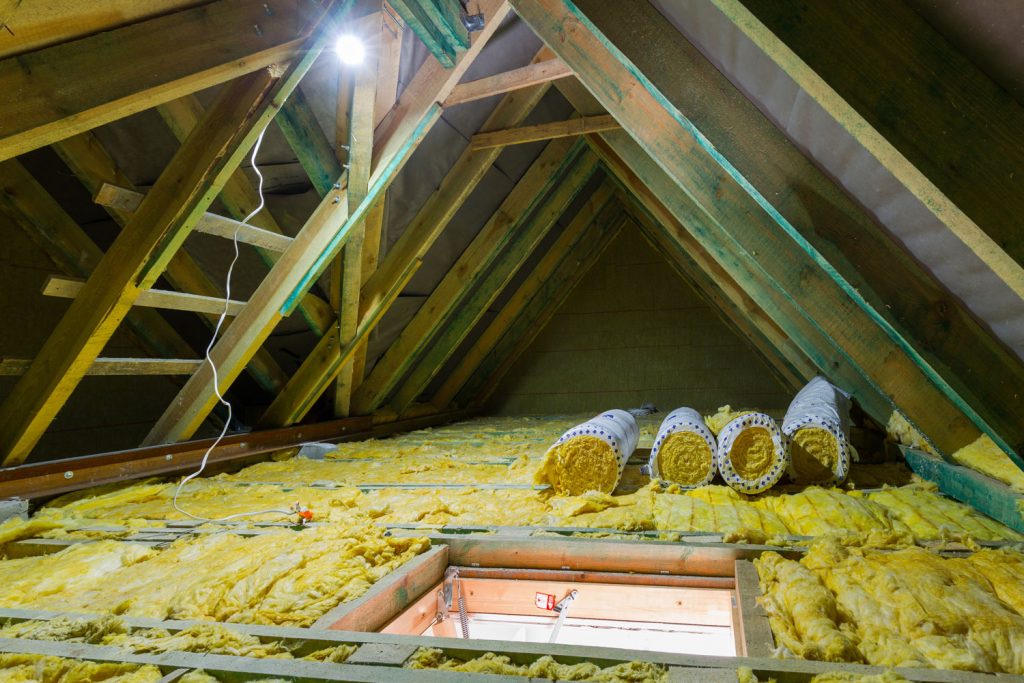
Types Of Insulation
Keep energy bills under control, and reduce the chance of damage or cold spots with the right insulation for your attic.
You can put down many types of insulation without help, but it is wise to hire a professional to ensure a successful installation. Check out the following types of insulation for their specific properties and benefits for your home.
Spray Foam
Many newer constructions like to use spray foam installation, which requires a professional to put in your home. However, this type of insulation is resistant to mold and will not readily absorb moisture. It can last a lifetime.
Cellulose
Cellulose is a desirable choice of insulation because you can combine it with fiberglass batting. It's also quite well-liked because it is made from recycled materials. However, it is prone to degradation after 15 years and is prone to developing mold or mildew.
Fiberglass
Fiberglass is a popular insulation because it is cost-effective, easy to install, and can last nearly a century if it doesn't get wet. Be careful about mold or mildew with this type of insulation. Also, you may need a replacement at 15 years.
Mineral Wool
You can use either glass wool, slag wool, or rock wool in the form of a roll or batting to insulate an attic. This type of insulation can last between 30 to 80 years in ideal conditions. However, you should replace it quickly if it is wet.
Reflective Insulation
This type of insulation goes on the ceiling of an attic. It helps reduce heat transfer from sunlight beaming on the roof and keeps a home cooler. It is best for warm climates, air ducts, and if the style of roof will absorb a lot of heat.
Can You Put Too Much Insulation In An Attic?
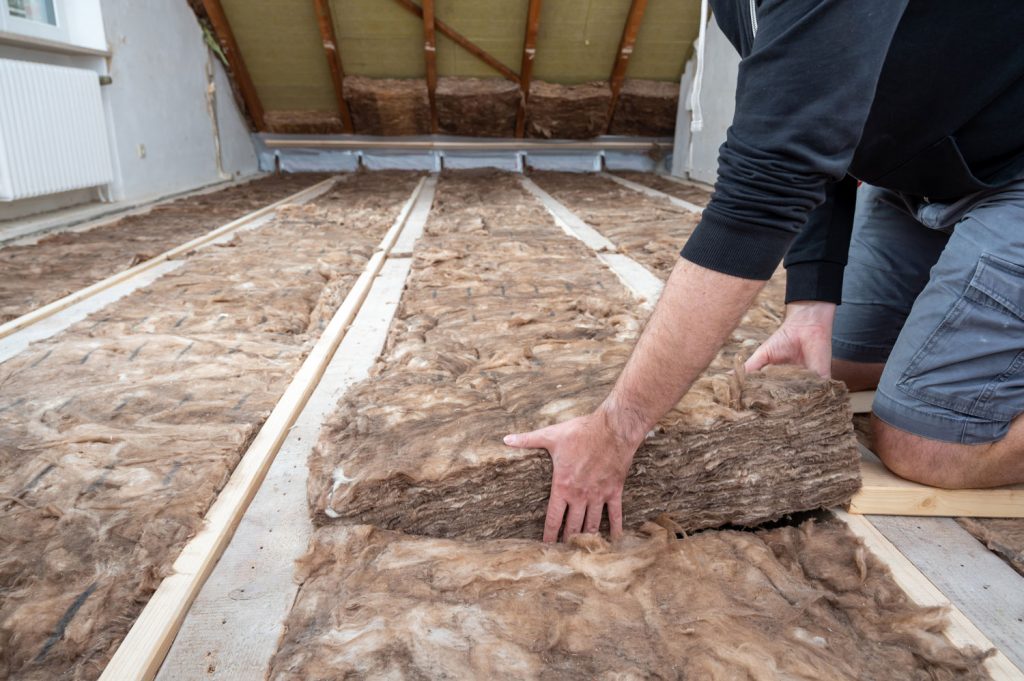
Insulation is designed to create a barrier between your home and the outside world, making it more difficult for drafts, pests, and moisture to enter. However, if you put down too much insulation, you can actually trap unwanted moisture.
You have to strike a balance with the amount of insulation in your attic to promote good ventilation to prevent mold and mildew and protect air quality. If the R-value of your insulation is higher than R-38, it is likely too much.
Review the type of insulation you wish to use for your attic, whether it is spray foam, fiberglass batting, cellulose, or mineral wool. Check out the recommended R-value for your zone, based on local agency standards.
You may think you are doing the right thing, adding as much insulation as possible. But, poor installation and whether an attic is vented or sealed will impact how well your home handles moisture, heat loss and impacts overall air quality.
Read More: Can You Over Insulate An Attic? [And what happens then?]
How Do You Tell If Your Attic Is Well Insulated?
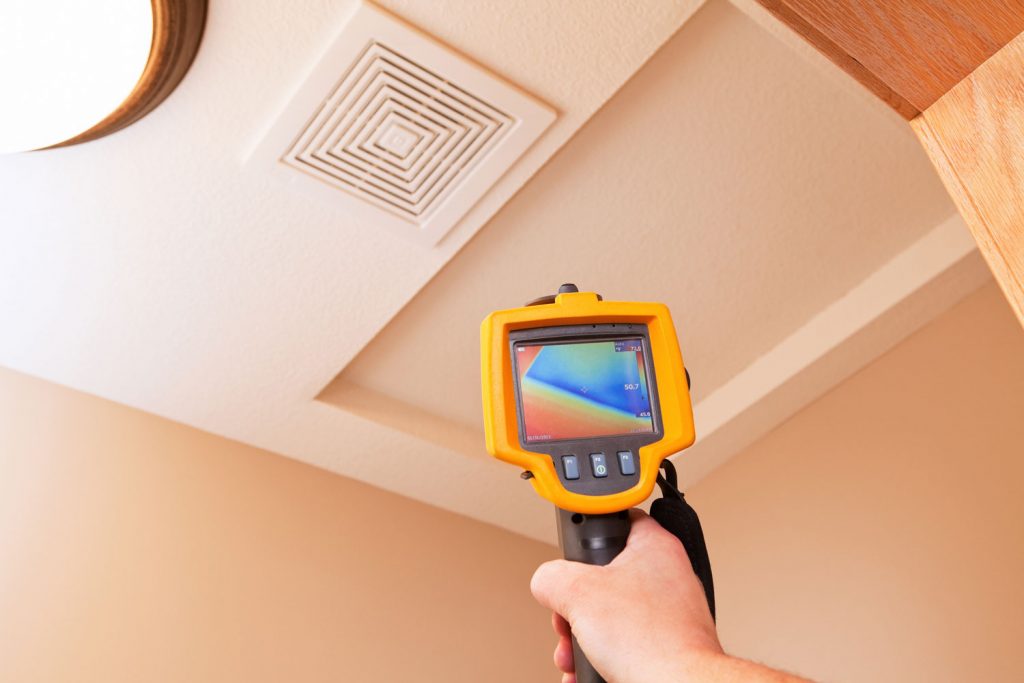
There are more than a few tell-tale signs if your attic is not properly insulated, like persistent leaks, the smell of mold, and inconsistent indoor temperatures. However, how can you tell if your attic has the proper amount of insulation?
When you review your energy bills, you shouldn't see any wild fluctuations because you have to overcompensate for drafty areas or cold spots. If you check out the exterior of your home after a snowfall, any snow should be slow to melt.
If you are still unsure if your attic has enough insulation, venture up to the attic and investigate. You shouldn't be able to see the floor joists, as there should be enough insulation covering the spaces in-between and over the joists.
Overall, you will know your attic is in top shape if you aren't struggling with freezing pipes, having problems keeping your home warm, or dealing with extremely high energy bills and frequent leaks.
Check out this insulation on Amazon.
What R-value Do I Need In The Attic?
You will want to install the recommended R-value of insulation for your attic to prevent problems like ice damming and promote healthy air circulation. During the winter, you want to prevent moisture build-up and heat loss.
In the summer, you want to allow hot air to release and manage moisture build-up near the roof. A combination of properly installed insulation at the ideal R-value and working with cold or hot air helps control moisture and comfort.
If you review local recommendations, depending on the type of insulation used and your geographical location, the R-value should be between R-30 to R-38. Based on your zone, R-38 is usually good enough, but it may need to be higher.
Check out this insulation on Amazon.
Should You Remove Old Attic Insulation Before Adding New Insulation?
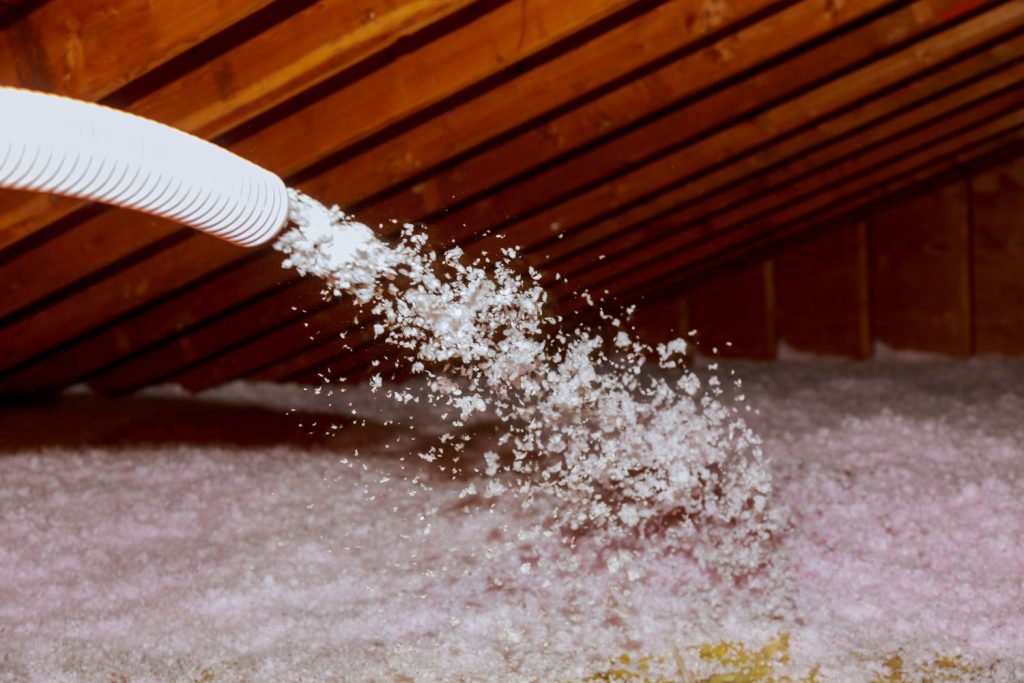
You want to thoroughly look at the current attic insulation before adding a new layer. It may seem economical to simply throw on a new layer over the old, but you could end up trapping problems like rodent excrement or mold.
Ideally, it is better to remove any old attic insulation, especially if it is crumbly, stained, smells bad, or wet. Over time, insulation degrades in quality and is susceptible to damage caused from condensation, mold, moisture, or pests.
Insulation should be fluffy and have some airiness to it in order to promote healthy air circulation and reduce heat loss. If you are installing a different type of insulation than the existing type, you need to remove the old one first.
Hire a professional removal service if replacing fiberglass insulation with another type. You may want to test old insulation for any contaminants too. You can typically place roll or blown loose insulation on top of older insulation.
How Often Should Attic Insulation Be Replaced?
Most types of insulation used for the attic can last 80 to 100 years. However, most insulation loses performance by the 15-year mark. If you notice the following in your home, you may want to replace the attic's insulation.
- There is an increase in pests like rodents, flies, bats, raccoons, or squirrels in the attic.
- There is pipe damage and areas that smell like mold or mildew throughout the home during colder months.
Check out this mineral wool insulation on Amazon.
- Energy bills are more expensive than usual, and it is hard to maintain a comfortable temperature.
- The current insulation in the attic is flat, crumbling, has visible wet or moldy areas or excrement.
Make sure when you replace your attic insulation to use the recommended R-value and type of insulation for your home's needs. You can choose from fiberglass batting, blown loose insulation, mineral wool, spray foam, or foil.
Read More: How Long Does Insulation Last And When To Replace It
Conclusion

There are plenty of benefits to having a high R-value for your attic's insulation. You can reduce unwanted moisture, structural damage, and cold drafts with an attic insulation depth between 10 and 14 inches.
Choose your type of insulation based on its performance, and to keep out pests, cold, and moisture. You should change the insulation in your attic as needed to improve your home's energy efficiency and comfort levels.
Before you go, check out the following helpful articles.



